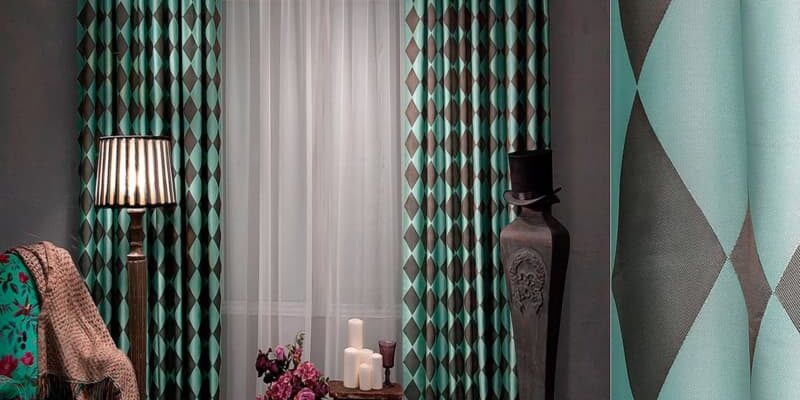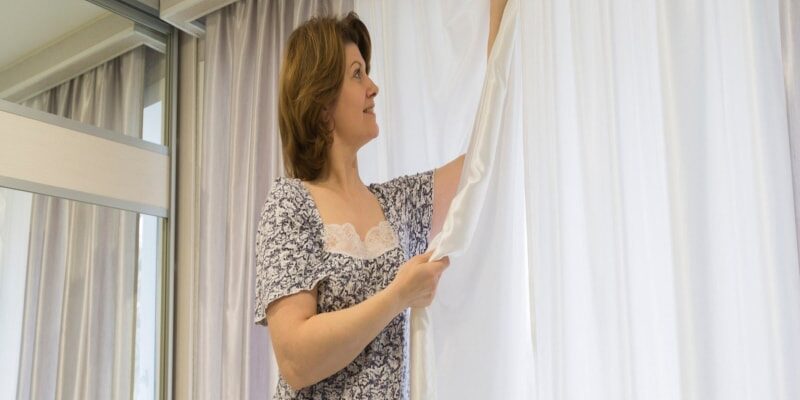Curtains are super essential to a room’s overall appeal in addition to serving a functional purpose in homes by obstructing light and providing seclusion. One popular trend in interior design is layering curtains to create a unique and dynamic look. This involves pairing traditional and modern curtains to add depth and texture to a space.
However, it can be challenging how to properly layer curtains to achieve the desired effect. This article will provide complete guidance on how to combine modern and traditional curtains to give any space a unified and eye-catching appearance.
Tips and Tricks for Pairing Traditional and Modern Curtains
To create a coherent, attractive image, you can blend traditional and modern curtain designs using the following tips and tricks:
Set a Neutral Foundation First
Beginning with a neutral basis is an incredible method to create unified and adaptable aesthetics when creating a space. By choosing a neutral color scheme for your walls, floors, and furnishings, you create a blank canvas that can easily be updated and refreshed with accent pieces and accessories.
A neutral base also allows you to experiment with different textures, patterns, and colors without overwhelming the space. You can add pops of color and interest with curtains, rugs, throw pillows, and artwork without worrying about clashing with bold wall colors or patterns. Additionally, a neutral base creates a timeless and classic look that can easily adapt to different styles and trends over time. Whether you prefer traditional or modern decor, a neutral base provides a solid foundation for any design approach.
Also Read: 10 Unique Living Room Curtain Ideas | Choose The Best Curtain
Play with the Patterns
Playing with patterns is a fun and creative way to add personality and interest to your decor. When it comes to curtains, mixing patterns can create a dynamic and visually appealing look. To effectively mix patterns in your curtains, choose patterns that complement each other in color, scale, and style. For example, you can pair a small-scale geometric pattern with a larger floral or striped pattern for a cohesive look.
It’s important to balance patterns with solid colors to avoid overwhelming the space. Use solid-colored curtains or neutrals as a base layer, then add patterns in the top layers. This creates a layered and textured look that is stylish and eye-catching. In order to discover the ideal fit for your area, don’t forget to have fun and experiment with various pattern combinations.
Use Curtain Ties
Using curtain ties is a practical and stylish way to keep your curtains neatly layered and in place. Curtain ties come in a variety of styles, from simple hooks to decorative tassels and clips, and can be easily attached to your curtains to hold them back.
Using curtain ties not only adds a decorative element to your curtains but also helps to prevent tangling or twisting. By enabling you to move your curtains, they can also aid in regulating the amount of natural light that enters your room. When choosing curtain ties, consider the style and color of your curtains, as well as the overall aesthetics of your space. Select ties that complement your curtains and add to the overall design of your room.
Consider Function
When it comes to selecting curtains for your space, it’s important to consider the function of each layer. You would want to choose drapes that give insulation, seclusion, or both, depending on your requirements. For instance, you may want to choose a thicker, more opaque fabric for your curtains if you want more coverage and privacy protection.
If you want to block out light, choose modern curtains that are designed to filter or block light, such as blackout curtains. Another important consideration is the quantity of natural light in your space. If you want to let in natural light, opt for sheer or semi-sheer curtains. If you want to control the amount of light entering your space, consider layering curtains with different levels of opacity. By considering the function of each layer, you can create a functional and stylish curtain design that meets your specific needs.
Read: What Are The Top 5 Curtain Fabrics For Homes?
Textured Curtains Over Simple Curtains
Layering textured curtains over simple curtains is a great way to add depth and texture to any room. The combination of simple and textured curtains creates a subtle yet visually interesting effect. When layering textured curtains, consider using a neutral color to avoid overwhelming the space.
Natural materials like linen or cotton can add a cozy and comfortable feel to a room. Alternatively, using a patterned or embroidered curtain can add texture and visual interest. When pairing textured curtains with simple curtains, it’s important to make sure that the colors and styles complement each other. This will create a cohesive look that ties the room together.
Conclusion
If your residence is located in Dubai, there are many options for finding high-quality curtains to use in your layering design. Choose reliable stores that provide a large assortment of curtains in various hues, textures, and patterns to match your preferences.
Many curtain stores in Dubai also offer custom-made curtains, allowing you to design a unique and personalized look that perfectly complements your space. Additionally, you can find a range of curtain accessories, such as ties and rods, to complete your design and add functionality to your curtains.









